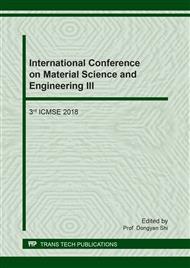p.126
p.132
p.137
p.144
p.148
p.154
p.159
p.165
p.170
Effect of Copper on Formability and Weldability of SUS 430J 1L Steel for Bead Forming of Drum
Abstract:
Washing machine has greatly influenced people’s life styles by providing easy means of washing clothes and drying them out to a considerable extent. This not only saves time and amount of water used but also helps the user to wash and dry clothes with a lot of ease due to its fully automatic nature. But taking advantage of fully automated technology have some limitation, we have to take extra care during modeling of washing machine components and there selection of materials. In this paper we are studying about the change in formability and weldability properties of SUS 430J 1L steel sheet, by changing the amount of alloying elements for the manufacturing of washing machine drum beads. Two standard tests ASTM A751 - 14a and ASTM E8 / E8M – 16a is use for two types of samples, there comparison between mechanical and chemical properties and its effect on weldability and formability are discussed. From the results of the test, we find out that the formability is increased by increasing the amount of copper content in the steel sheet. Also by addition of more copper after some considerable amount negatively affect the weldability of the steel sheet.
Info:
Periodical:
Pages:
159-164
Citation:
Online since:
October 2018
Authors:
Price:
Сopyright:
© 2018 Trans Tech Publications Ltd. All Rights Reserved
Share:
Citation:


